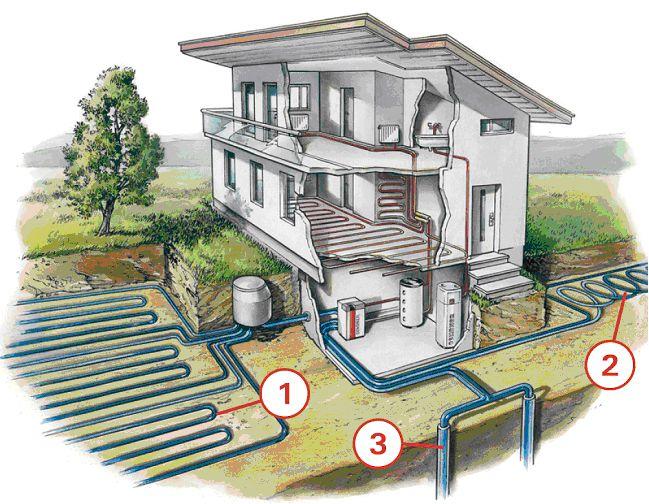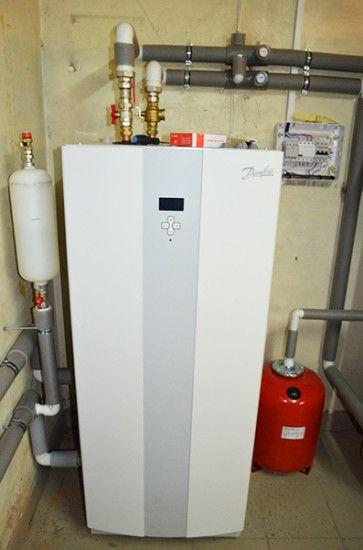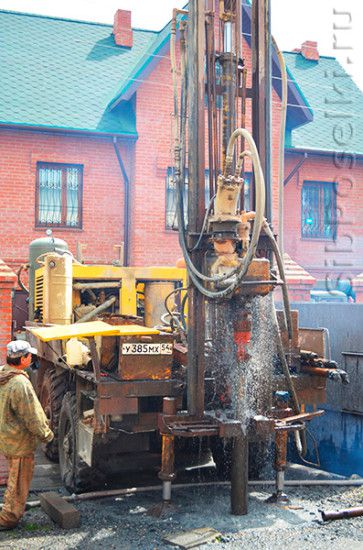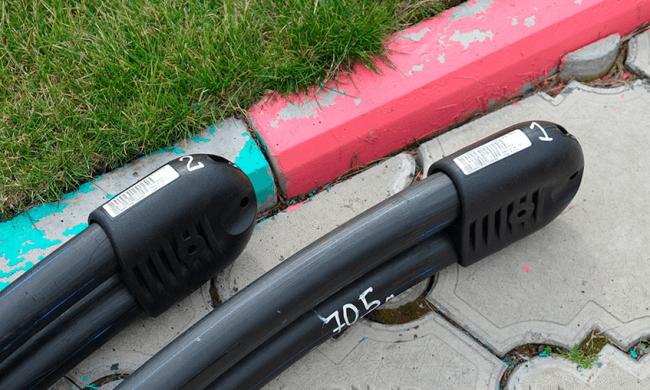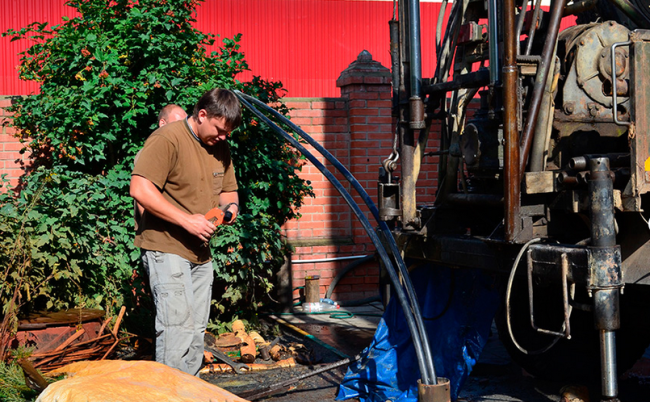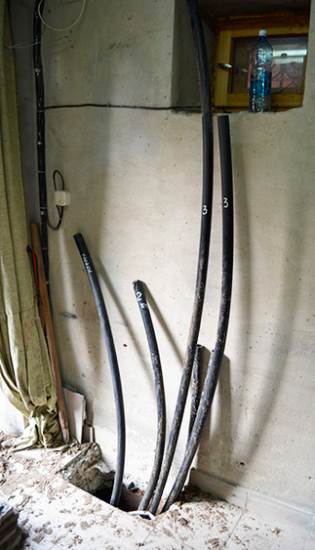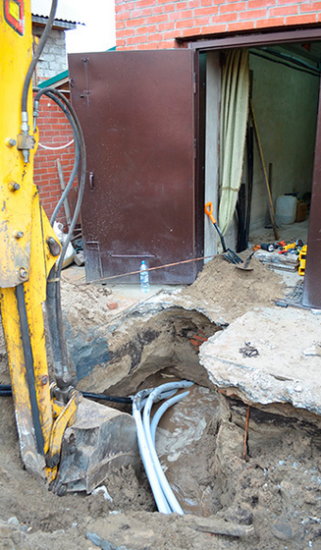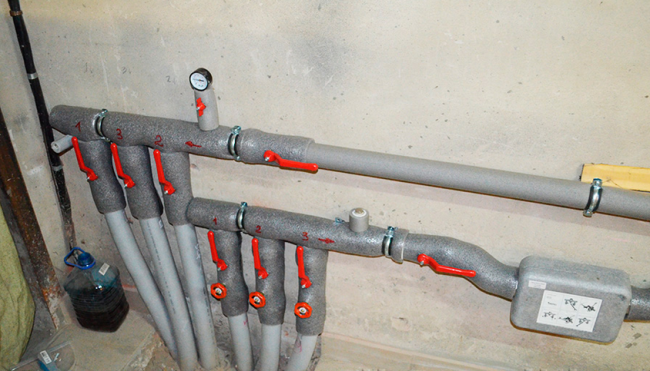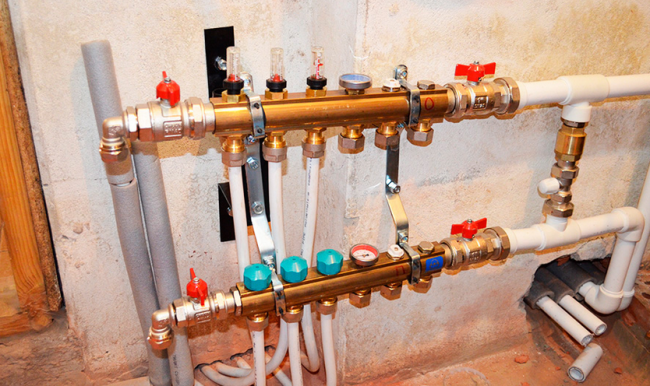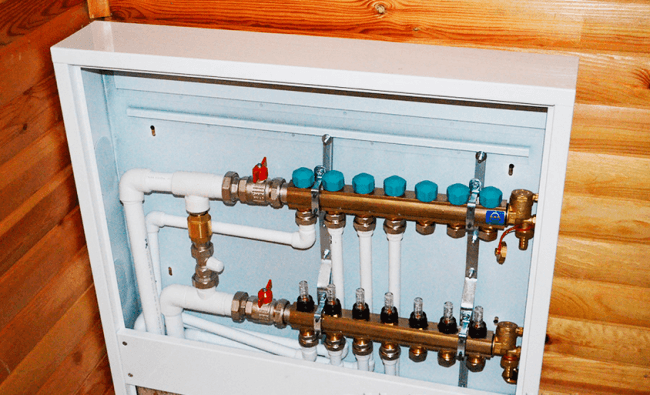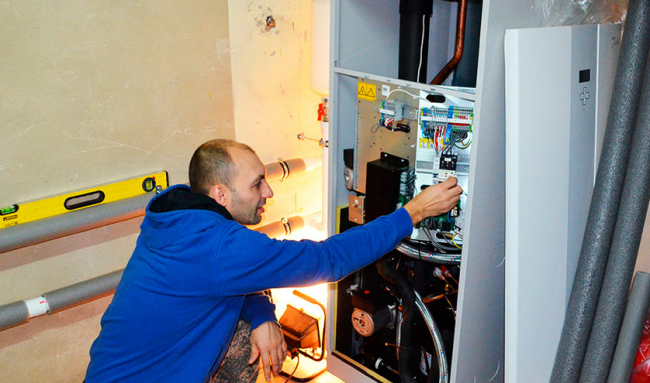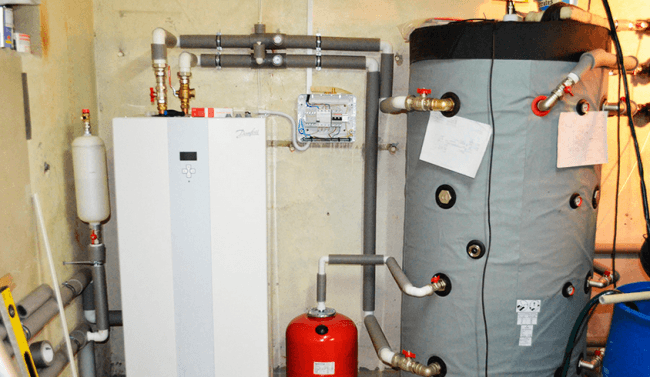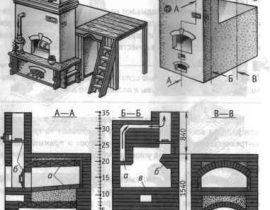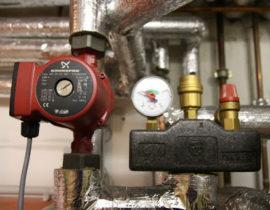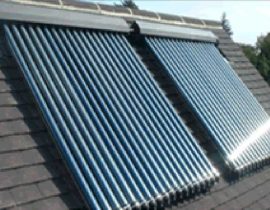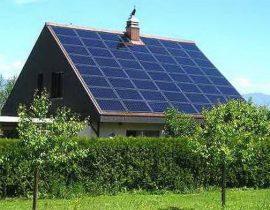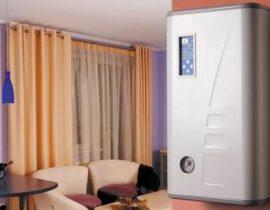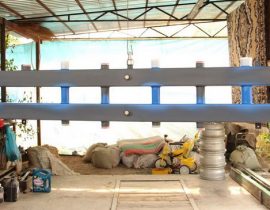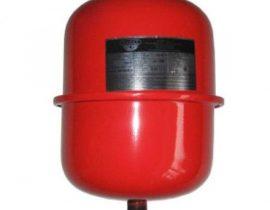Autonomous heating systems are what makes a country house truly a "fortress". By installing a reliable and energy-efficient design, you will get rid of the dictates of monopolists and will be able to regulate the climate in your home as you see fit. There are many designs of autonomous heating systems. They are divided into types according to the source of thermal energy. It can be solid fuel, electricity, gas supply or solar energy. Recently, a fresh innovation has appeared on this market - a heat pump that uses the stable temperature of the earth's interior to heat a house.
Content
- The principle of operation of a heat pump for heating a private house: we explain on our fingers
- What are the parts of a heat pump?
- External heating circuit of the heat pump
- How is the internal circuit of the heat pump
- Obvious advantages of installing a heat pump for heating a private house
- Installation of parts of the heat pump system
- Still don't understand how a heat pump can heat your home? Watch the tutorial video
- Types of heat pumps depending on the type of system (video)
- Is it possible to make a heat pump with your own hands?
The principle of operation of a heat pump for heating a private house: we explain on our fingers
If we discard all the technical points, we can give you an example that will once and for all help you understand how a heat pump can heat your home, while spending such a negligible amount of electricity. Imagine that in the heating system of your private house: battery radiators, pipes (internal circuit) - 100 liters of cold water with a temperature of 2 degrees Celsius are poured. You are laying a very long plastic pipe about 2 meters underground, with a service life of up to 100 years (outer contour). Approximately 1000 liters of working fluid are placed in an underground pipe. The sun warms our planet all year round and warms up its bowels to a temperature of +7 +8 degrees Celsius. In total, we have 1000 liters of liquid with a temperature of +7.5 degrees. Now the thermal boiler itself comes into play, which, like a juicer, draws 7.5 degrees from each liter of working fluid, let's write the formula: 1000l. x 7.5 = 7500 degrees of pure energy. This clean energy is transferred to the water in the heating system itself, as a result we get 100 liters of water with a temperature of 7500/100 = 75 degrees, not bad, right? All the main energy costs are spent on two pumps that pump the working fluid through the systems of the external (underground) and internal (house) circuits and the compressor that creates pressure. It turns out that the main workhorses are pumps, hence the name of the system itself - “Heat pump”.
But how does this “Miracle Cauldron” manage to take energy and concentrate it to a much higher temperature? It's very simple, have you ever wondered how your refrigerator or air conditioner works? Maybe the air conditioner is a mystery to you, but it works and the home heating system with a heat pump will work just the same, it's like a refrigerator in reverse. Schematically, this can be represented as follows:
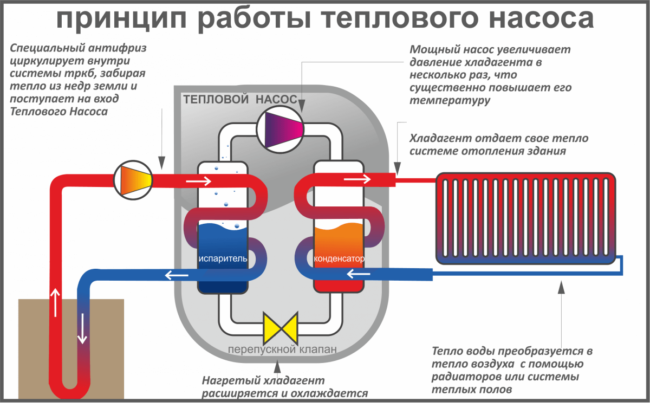
The use of heat pumps is only gaining momentum in Russia. This information is just beginning to spread in the professional construction environment. Also, information about these systems is still little known to Russian consumers. However, this innovation has already become widespread and for about thirty years such structures have been used to heat private houses. A particular advantage of these structures is the fact that they use renewable energy sources. This approach involves one-time costs for the purchase and installation of the system, low costs for regular routine maintenance and absolutely free energy. This is important in the context of rapidly growing tariffs for any type of energy.
What are the parts of a heat pump?
Based on the design features, the entire family of heating systems with "heat pumps" is divided into three main components:
- Outer contour. This design is placed either in reservoirs or directly in the thickness of the earth and serves to collect the natural heat of the bowels of the earth.
- The heat pump itself. This equipment operates on the opposite principle of a conventional domestic refrigerator and transfers heat accumulated by the earth or water from previous exposure to solar energy into the room.
- Inner contour. This is a classic system for distributing heat and hot water inside the home.
External heating circuit of the heat pump
The main element of the external circuit of such systems is the heat exchanger. It is mounted from plastic pipes located in a special way in the thickness of the earth or reservoir. Pipes can be laid in a vertical, horizontal or "water" method. The choice of laying method is determined individually for each system, since there are certain restrictions. Inside the pipes is a coolant - antifreeze. It has a low freezing point. Usually propylene glycol or ethyl alcohol is used for these purposes.
- Horizontal pipe laying is usually resorted to in the presence of a large personal plot, since there should not be any buildings above the pipes. Pipes are placed at individual depths for each region. So, for Siberia, this value is 1.8 meters. Pipe trenches are laid along a winding line.
- The vertical method of placing pipes requires large labor and financial costs, as it involves drilling deep wells. Wells can be up to 100 meters deep. But on the other hand, such systems can be installed even on a small personal plot.
- The water method of laying pipes should be chosen if there is a lake or river nearby. Pipes are placed in water below the level of winter freezing. This is the cheapest method of placing pipes, since it significantly reduces the length of the outer contour. The depth and length of the pipeline placement is calculated individually depending on the region. In winter, water in reservoirs freezes only on the surface, and in the depths of the reservoir its temperature remains positive.However, this statement is not true for all reservoirs - small lakes and rivulets can freeze to the bottom during a harsh winter. In addition, such a pipeline may be damaged during the spring ice drift. Raises questions and the attitude of regulatory organizations to the placement of pipes with antifreeze on the territory of reservoirs.
Technical features of the heat pump device
Such structures are purchased, as a rule, "assembly" and consist of the following components:
- boiler,
- External circuit pumping unit,
- Pumping unit for the internal heat distribution circuit,
- Automatic control system.
The heat pump itself has the appearance of a large gas boiler, connected to four pipes:
- Inlet and outlet of the external circuit
- To the supply and return of the heating system.
Such an installation, despite its solid purpose, has a fairly compact size and resembles an ordinary household refrigerator in appearance and noise level. This design can be installed in any utility room of your building, there are no special engineering requirements for it.
A heat pump can work as a source of heat for a heating or hot water system, or it can produce cold for air conditioning. It receives about 80 percent of the energy it needs to operate from external renewable energy stored in the ground or water column.
How is the internal circuit of the heat pump
The internal control of such systems is quite traditional. Heating rooms or, conversely, cooling them can be heated floors with a water coolant or special devices - fan coil units, reminiscent of an improved air conditioner.
In such systems, traditional heating radiators are not used, since the maximum temperature of the coolant does not exceed 55 degrees Celsius.
Installation of fan coil units is most preferable, as they can work more efficiently both in the fan heater mode in cold winters and in the cooling air conditioner mode in hot summers. In summer, the temperature of the air coming from the fan can reach a minimum value of 7 degrees, which will certainly be enough to effectively cool the house.
Obvious advantages of installing a heat pump for heating a private house
Consider the main advantages of such systems:
- First of all, they are extremely economical. Calculations show that heating costs when using such a system are reduced by seven times. The system requires electricity for its operation, but only 1 kilowatt of electricity will give you 4-7 kilowatts of thermal energy, of which up to 85 percent will be given to you absolutely free. At the same time, the system can equally effectively heat the room and cool it.
- These systems have very low operating costs. You will only have to pay for a small amount of electrical energy spent.
- You do not have to run around the authorities, coordinating the connection of the house to the main heat supply lines, to the gas mains. You won't have to worry about breakouts and leaks on these tracks.
- The only drawback of such a system is the cost of its installation. However, you can easily estimate how many years the installed system can pay for its purchase and installation.
Is it profitable to install a heat pump in modern conditions (video):
Installation of parts of the heat pump system
Having studied the procedure for installing heating and air conditioning systems based on heat pumps, you can easily carry out this process yourself. In any case, having the necessary knowledge, you will be able to correctly check the progress of such work by third parties.
At the initial stage, the required power of the system is calculated. To do this, the potential heat loss of the building is estimated.
Next, the required system configuration is selected: the required length and depth of the external circuit, the power of the "heat pump" and the volume and location of the heating and cooling devices of the internal circuit are calculated.
At the next stage, wells are drilled under the outer contour of the heating and cooling system.
Special, prefabricated geothermal probes are installed in the drilled wells.
The external circuit of the system is connected to a collector located inside the building. In parallel, the collector of the external circuit itself is manufactured and installed.
The heating and cooling system is calculated and designed. Immediately after the calculation, it is installed: a system of underfloor heating or combined fans is being built. When using fan coil units, ventilation ducts are installed up to their location.
The whole system is connected into a single whole.After collection, the entire system is filled with working fluids and a test connection is made.
For some time, the built system is run in various modes of operation. Depending on the achieved indicators, fine adjustment and tuning is carried out.
Due to the technological complexity of the adjustment, control indicators are taken from the system monthly for one year. In the future, the system, as a rule, begins to work on an annual cycle and does not require such frequent checks.
A number of organizations that install heating and cooling systems using "heat pumps" offer services for remote adjustment and configuration of system parameters. In this case, the physical presence of the installer in your home is not required.
Still don't understand how a heat pump can heat your home? Watch the tutorial video
Types of heat pumps depending on the type of system (video)
There are several types of heat pump systems, we suggest that you familiarize yourself with the features of each individual type, all the pros and cons are displayed on the video. We hope after viewing you will definitely decide for yourself which type is best applicable in your case!
water-water
Air to water
Air to air
ground water
Is it possible to make a heat pump with your own hands?
If you feel strong enough in yourself to create something grandiose, you can start by building an independent autonomous heating system for your home. The process of creating a heat pump from an old air conditioner is described in detail in this video, if you follow all his advice, then you will definitely succeed and you will save a lot of money, good luck with the build!
After installation - write to us about your result, we will be pleased to know how much you saved after installing the heat pump. With your advice, you will help those who are just about to join the progressive part of humanity!

